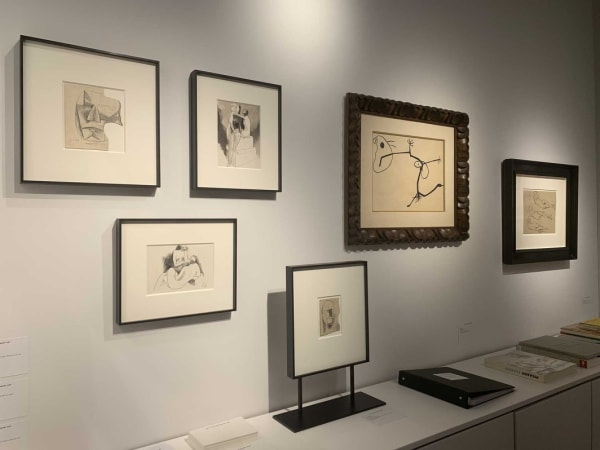“To project and design in space with the help of new methods, to utilize this space, and to construct with it, as though one were dealing with a newly acquired material—that is all I attempt.”
Julio González (Barcelona, Spain, 1876 – Arcueil, France, 1942) was a renowned sculptor, painter, draughtsman, and craftsman. The artist grew up working in his father’s metalsmith shop and attending evening classes at the Barcelona School of Fine Arts. In 1900, he moved to Paris and became acquainted with fellow artists Pablo Gargallo, Juan Gris, Manolo Hugué, Max Jacob, and Jaime Sabartés. Upon the outbreak of World War I he worked at the Renault Car factory and learned the technique of oxyacetylene welding, which he would later incorporate into his sculpture. From 1925-26 he worked as a studio assistant for Constantin Brancusi and in 1928 Picasso hired him to assist with welding. The two artists ended up collaborating for the next four years. This period was critical for González in that he made the decision to devote himself to sculpture rather than painting, and his sculptures became increasingly linear and abstract. In 1937 he contributed to the Spanish Pavilion at the World Fair in Paris as well as the Cubism and Abstract Art exhibition at the Museum of Modern Art in New York. His impact on the next generation of sculpture cannot be overstated as he opened up the possibilities of welding and working with iron in new ways.
-

A Voyage Through Drawing at Salon du Dessin in Paris
Anna Mikaela Ekstrand, Cultbytes, March 23, 2024 -

Les anciens font la loi au Salon du Dessin
Jean-Marie Wynants, Le Soir, March 22, 2024 -

Salon du dessin à Paris: les stands à ne surtout pas manquer cette année
Guy Boyer, Connaissance des arts, March 19, 2024













